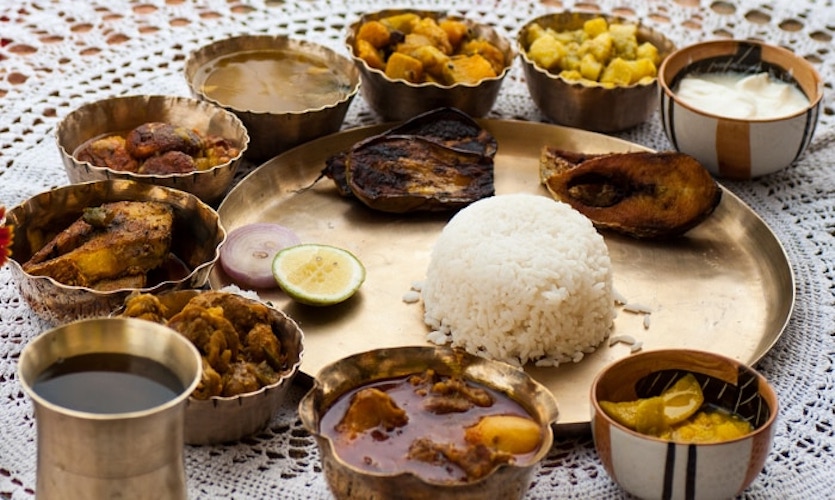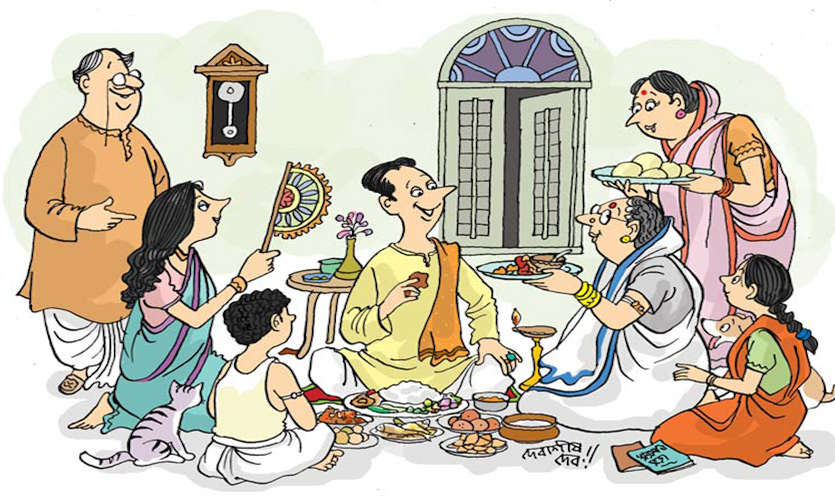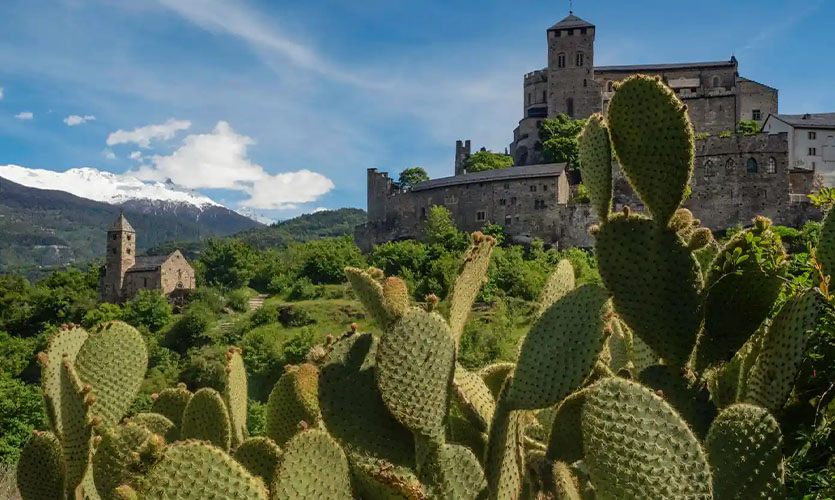“Welcome to Subhash Chandra Bose International Airport, Kolkata. The temperature outside is 35 degree centigrade and humidity is 74 percent,” announced the pilot. This was a completely unplanned trip as a few cousins living in the United States made it last minute for this year’s Jamai Shosti celebration.
A treat for the son-in-law or Jamai awaits every year at his Shoshur bari (in-laws house), in the Bengali month of Shosti. Jamai Shosti is a social custom as part of which his in-laws treat the jamai with his favourite delicacies. This is exceptional to ensure that he treats their daughter with due respect for the rest of the year. Though this reason is not very justified, the stories narrated indicate so. The son-in-law is offered gifts and treated with an array of delicacies.
This ancient custom has been practised for ages by the Bengalis. According to a legend, a family living in a small town had a greedy woman as their daughter-in-law. She used to eat most of the food in the house and then blame it on the cat that regularly came into their kitchen. The cat once complained about the injustice to Goddess Shosti. Later, the daughter-in-law gave birth to seven sons and a daughter, but all her children were stolen. She was devastated and depressed and went to the jungle with a broken heart. On seeing her in tears, Goddess Shosti felt bad, and appeared before her as an old lady to ask the reason for her sorrow. The young woman narrated her story. Goddess Shosti reminded her of her past sins. She apologised for her behaviour and asked for mercy. The old woman asked her to perform some social rituals to get back her children. Thus, from that day onwards, women folk pray to Goddess Shosti for their children on the sixth day of the bright phase of Shosti. Gradually, this day developed as Jamai Shosti, as the son-in-law was also a child for the mother-in-law.
It was 6:30 pm. The crimson-hued mansion was lit with the chandeliers when we reached. The entire family was seated in the huge courtyard yapping. The kids were playing on the two elongated balconies running on the ground and the first floor. We entered the house through the public entrance that led to the courtyard. These bonedi bari or old mansions have two typical entrances; one leads to the public areas like the courtyard and boithok (public seating area); and the other to the semi-private or private areas like the dining room, kitchen and bedrooms. The family was busy indulging themselves in the muri (puffed rice) and telebhaja (fritters made out of various vegetables), which is a ritual in Bengali households as the most popular evening snack.
The next day was really special. Jamai Shosti is a festival of gastronomic celebrations, and is a conventional Bengali affair. Though the fast pace of life and the changing social norms have mellowed down the once very happening social custom among the Bengalis, this particular day calls for mothers-in-law to brace their unusual culinary skills and present mouth-watering delicacies.
Jethu (the eldest paternal uncle) and kaku (the youngest paternal uncle) left really early in the morning for the fish market, to get the fresh catch. Large-sized fishes were delivered to homes but my uncles always got it themselves. The unstated goal of most fathers-in-law lies in getting the best Ilish (Hilsa) fish in the market. In fact, a father-in-law’s rating points often depend on the quality and size of the Hilsa he can procure for his son-in-law. Unfortunately, June is not the correct time for a fresh Hilsa catch, but that does not deter anyone from paying a fortune for a fish that has been preserved in cold storage for months.
My brothers went to get the sweets. The hari of rosagollas and packets of sondesh were placed on the huge marble-topped dining table. The full course lunch right from gorom hate ghee to pan was prepared by the food-loving Bengalis for their loving sons-in-law. My Jethima (eldest paternal aunty) and kakima (youngest paternal aunty) along with Putul di (our family cook for everyday cooking) and Kalu da (our celebrity chef who had been managing all the weddings and special occasions in our family) were busy managing their respective tasks for the lunch. Lunch is always more extensive in Bengal.
Two of our recently married cousin sisters arrived with their husbands. This was the first Jamai Shosti for the new sons-in-law who were carrying packets of misti (Bengali sweets) for their mother-in-law. Jamais are supposed to wear the traditional dhuti (dhoti) and panjabi (kurta) on this occasion. On their arrival, a brief social ritual was performed. The jamais were given five fruits, mostly seasonal ones like lichi, mango, jackfruit, jamun and so on, followed by aashirbad or blessings with dhan (paddy) and dubbo (tender grass). A mark or a phota with curd was applied on the forehead and a yellow thread was tied around his wrist. The entire ritual is usually performed sitting on the ground on an asan (mat). The jamai usually gifts the mom-in-law a sari on this occasion.
These rituals have been performed for ages. Usually, it’s a day-long gastronomical affair starting from the morning itself. The welcome commences with a cool drink like the aam pora shorbot (burnt mango drink) to beat the heat, along with an oppressive spread of sweets that continues for the entire day. The khejurer sondesh (date sweet) is one unique dessert prepared in our family. Every family has their own set of delicacies for every particular occasion. Another famous yet lost sweet, the chandrapuli, was made by my thakuma (paternal grandmother) on special occasions, one of them being Jamai Shosti.
The traditional picture of a Jamai Shosti in Bengal is the son-in-law squatting on the floor on a hand-embroidered mat with a huge metal thali and at least a dozen bowls stuffed with delicacies as the mom-in-law looks over, cooling him down with a hand-held fan or hath pakha. But now the times have changed. The air conditioners have now made the gastronomic torture more bearable. No one really sits on the floor except perhaps in a few traditional households like ours. Another ritual that was performed as heard from the elders of the family was where a totto (an array of decorated trays) was sent to the son-in-law’s house with homemade traditional sweets and all the seasonal fruits. The totto was incomplete without a hari (earthen pot) of misti doi (sweetened yogurt). A pair of new clothes for the jamai and meye (daughter) was also sent.
Hinger kochuri (asafoetida puffed breads) and chola-aloo dom (chickpea and potato curry) were served to everyone as the jolkhabar or breakfast, all of them being no onion no garlic recipes. The elderly women were busy preparing the lunch that had always been the main attraction of the day.
While our cousins were engrossed in gossiping, we heard jethu calling us to the dining area for lunch. As we approached, the distinct aroma of jamidari polao (traditional pulao) and kosha mangso (bengali mutton curry) filled the air. All the meye and jamai sat on the mats arranged on the floor. It was a spectacular view, a common one in every Bengali house on this day. A huge metal plate surrounded by numerous metal bowls full of the day’s special recipes completed the scene. This year was a little more special for the entire family as all the cousins managed to make it for this occasion after a very long time.

The course generally progresses from lighter to richer and heavier, and goes through various tastes and taste cleansers. Rice remains common throughout the entire meal. Sada bhaat is paired with a dal along with at least five bhajas (fries). We were served aam dal (mango cooked in masoor dal), which is a summer favourite along with begun (brinjal) bhaja, dharosh (lady finger), potol (pointed gourd) bhaja, aloo (potato) bhaja and posto narkel boda (poppy seeds and coconut cutlets). The chanar dalna (cottage cheese curry), dhokar dalna (lentils cake curry), chingri malai curry (tiger prawns cooked in coconut gravy), bhapa ilish (steamed Hilsa fish) was paired with steamed rice. Then came the kosha magsho with the jamidari polao (fragrant rice), and finally the aam chatni (mango chutney) was served.
While few of us decided to indulge in bhaat ghoom (sleeping after a meal), which is the most satisfying moment for a Bengali after a sumptuous meal, others didn’t want to miss any chance to be with the family and have a nice time. We have a family tradition of kodi khela (playing with the shells) on this special occasion. This is a fun ritual where the daughter hides a shell in her fist and the jamai needs to open it up with the help of the little finger only. In the next round, the daughter tries to do the same and it is believed that if the daughter wins the game, then she dominates their married life for the next year.
The evenings are more fun and musical, especially in our family. The entire family gathered in the open courtyard where all performed whatever they were good at. Abriti (recitation of poems), dance on Rabindra sangeet (songs written by Guru Rabindranath Tagore) and later, the new generation danced to modern Bengali songs. The dinner was Kolkata style mutton biryani (with potatoes and boiled eggs), chicken chaap (chicken in yogurt and dry fruit gravy), luchi (poori) cholar dal (channa dal), and an array of misti (sweets).
Bengal is known for its “baro masshe tero pabon”, which means thirteen festivals in twelve months, and Jamai Shosti is one of them. This is a festival of bringing the entire family together, and also a celebration of a dying ritual.
Read more: Kosha Mangsho – The Sunday Feast In Every Bangali Hesel










